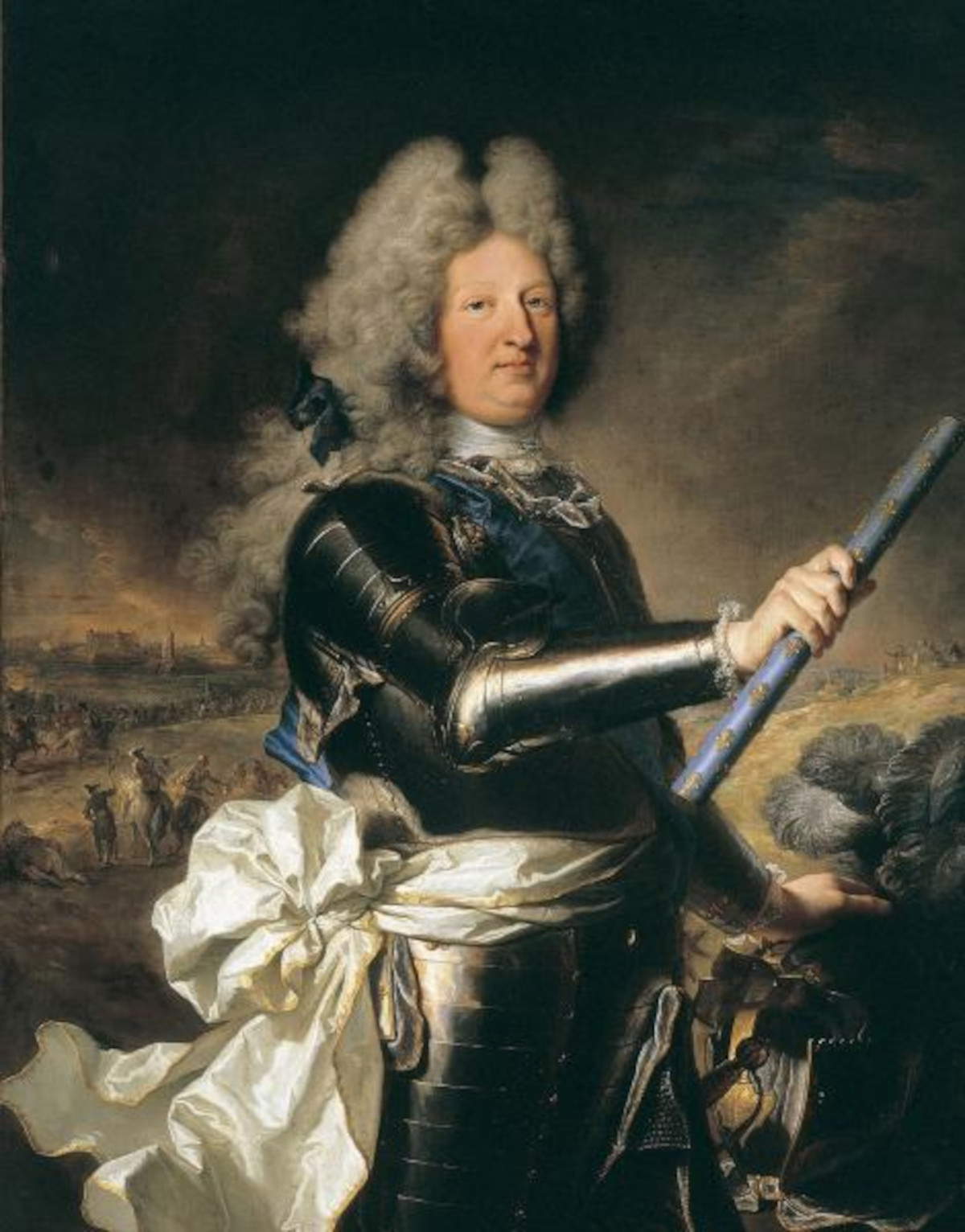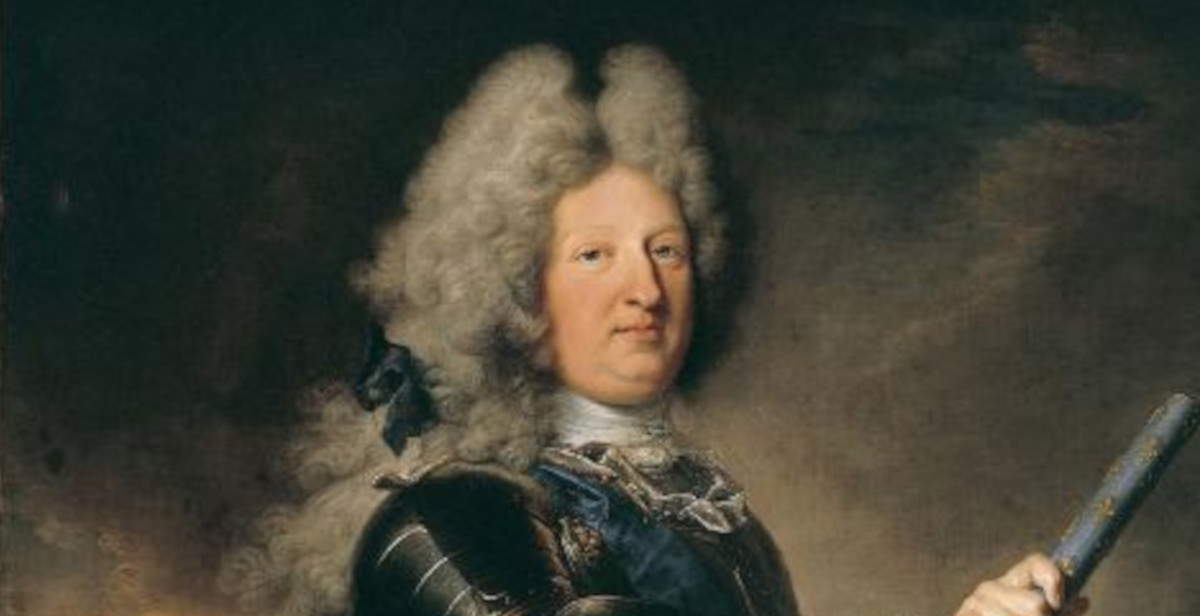From Oct. 14, 2025, to Feb. 15, 2026, the Palace of Versailles will dedicate for the first time a major exhibition to a little-known figure in French history: Louis of France, son of Louis XIV, born in 1661 and known in life as Monseigneur, who passed into history as the Grand Dauphin after his death in 1711.
Described by memoirist Saint-Simon as “son of a king, father of a king, and never king,” the Grand Dauphin had a singular fate. Although destined to become king of France and one of the eminent figures of the Grand Siècle, he spent his entire life in his father’s shadow, never reigning. Instead, he saw his son ascend the throne of Spain before dying at the age of 49.
The exhibition, curated by Lionel Arsac, will reconstruct his existence-from his upbringing to his passion for the arts-through 250 works, some of them previously unpublished, from public and private, French and international collections. Among the most prestigious loans are the monumental Alari d’Algarda from the Wallace Collection in London, jewels from the Dauphin’s Treasury housed in the Prado and the Louvre, the Fonthill Vase from the National Museum of Ireland in Dublin, as well as a pair of commodes from the Spanish royal collections, exhibited for the first time outside Spain. The Bibliothèque nationale de France also contributes a significant number of loans.
The first section of the exhibition will be devoted to the prince’s birth and childhood. Born in Fontainebleau in 1661, the eldest son of Louis XIV and Marie-Thérèse of Spain, his coming into the world was celebrated throughout the kingdom. Louis XIV wished to prepare his son for the role of King better than he himself had done, personally choosing tutors and even writing Memoirs intended for the Dauphin’s education. Original teaching tools - playing cards, illuminated manuscripts, engravings - as well as tasks performed by the Dauphin some of his artistic works will be on display. The exhibition will also evoke the living environment of the heir to the throne, including the sumptuous apartment built in 1666 for the Dauphin at the Tuileries Palace. Now gone, it brought together works by 17th-century artists: for the first time, the surviving paintings, now scattered in several European collections, will be brought together. A section will then be devoted to his training in strategy and the art of war, with exercises in a military fort built especially for him; he also joined his father during several sieges. His greatest war feat as an adult was the taking of Philippsburg in 1688.
The second part will introduce the Grand Dauphin’s family. In 1680 he married Marie Anne of Bavaria, by whom he had three sons, Louis (Duke of Burgundy), Philip (Duke of Anjou, future Philip V of Spain) and Charles (Duke of Berry). Three years after their marriage, the Dauphine became the first woman of the kingdom upon the death of Queen Maria Theresa, wife of Louis XIV. After a seemingly happy start in life, the princess died in 1690, exhausted by numerous miscarriages. Special attention will be paid to the fate of Philip, who in 1700 became king of Spain, founding the Bourbon branch that still reigns today.

The last section will highlight the Grand Dauphin collector and patron. In fact, in addition to enjoying the royal collections made available by his father, he knew how to create a personal collection of exceptional wealth: paintings, Florentine bronzes, inlaid furniture, Chinese porcelain, gems and semi-precious stones. For the first time, many of these masterpieces-now stored among Prado, Louvre and other European museums-will be exhibited together, evoking the opulent surroundings of his Versailles apartment and his famous Cabinet of Mirrors, now gone.
The Grand Dauphin was also an avid hunter, a melomaniac and a great lover of spectacles of all kinds: theater, ballets, opera, knightly jousts and masquerade balls. From 1695 he made Meudon his private residence, transforming it with the help of artists such as La Fosse, Jouvenet and Hardouin-Mansart into one of the most splendid estates of the time, although it no longer exists today.
In 1711, stricken with smallpox, he died in his beloved chateau of Meudon at only 49 years of age. His demise threw Louis XIV into mourning and opened a season of dynastic drama: within a few years his eldest son, daughter-in-law and grandson also died, causing little Louis XV to ascend the throne at the age of only five.
The Grand Dauphin, though he never reigned, remains a central figure in the history of the French and Spanish monarchies: grandfather of Louis XV and ancestor of Louis XVI, Louis XVIII and Charles X, as well as founder-through his son Philip-of Spain’s Bourbon dynasty that has lasted for more than three hundred years. Educated to the throne, a great collector and man of his time, with this exhibition his role is brought to light.
The exhibition is made possible through the sponsorship of Free - Iliad Group and Hubert and Mireille Goldschmidt
 |
| The Palace of Versailles dedicates a major exhibition to the Grand Dauphin, son of Louis XIV and father of Philip V |
Warning: the translation into English of the original Italian article was created using automatic tools. We undertake to review all articles, but we do not guarantee the total absence of inaccuracies in the translation due to the program. You can find the original by clicking on the ITA button. If you find any mistake,please contact us.